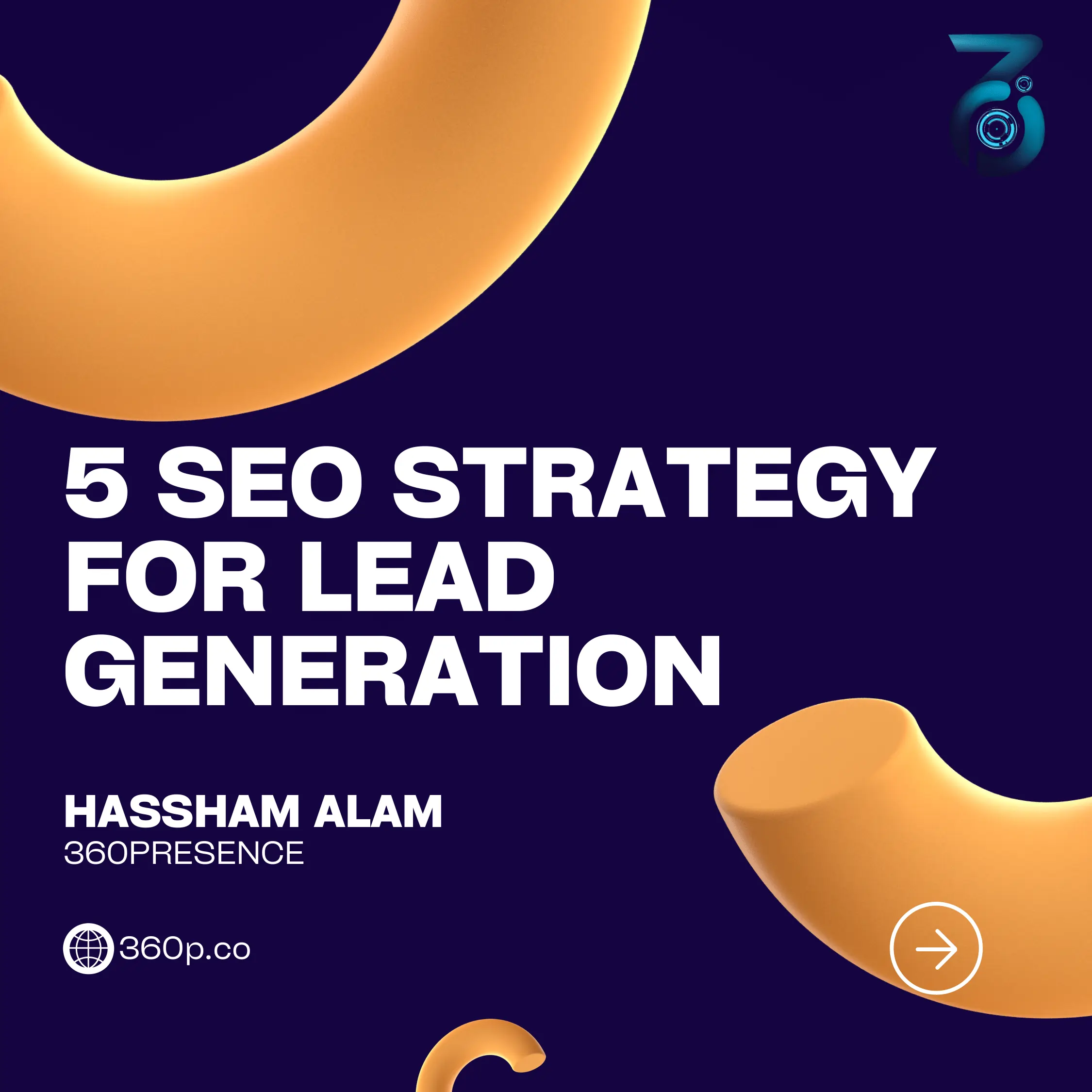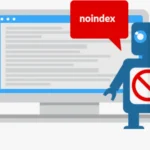5 SEO Strategies to Boost Your Leads

5 SEO Strategies to Boost Your Leads
Finding your next customer online can be challenging in a crowded digital space. But what if you could tap into the moments when potential customers actively search for the products or services you offer? That’s the core power of Search Engine Optimization (SEO).
SEO is optimizing your online presence so that your business appears prominently when people search on Google and other search engines. Crucially, effective SEO isn’t just about driving general website traffic; it’s about attracting the right traffic visitors with high intent who are actively looking for solutions and are therefore much more likely to become valuable leads.
Let’s explore how you can harness the power of SEO to attract interested prospects around the clock. Here are 5 powerful and more detailed SEO strategies to significantly boost your lead generation efforts:

1. Informative Blogs
By creating informative blogs, you position yourself as the expert who provides clear, helpful solutions. This foundational content marketing strategy is paramount for long-term SEO success. This strategy goes beyond just writing occasional articles, it’s about implementing a robust content strategy centred around your audience’s needs.
Begin by performing thorough keyword research for blogs to identify the exact questions, challenges, and topics your potential customers are searching for. Utilize tools like Google’s “People Also Ask” section, Reddit, Quora, and even insights from your sales and customer support teams to uncover these audience pain points.
Then, craft valuable content that offers comprehensive answers and solutions. Think about creating various types of educational content, such as ultimate guides, step-by-step tutorials, in-depth industry insights, research summaries, myth-busting articles, or detailed Q&A posts.
By consistently offering this kind of high-quality, evergreen content, you naturally build trust and establish authority in your niche. This process doesn’t just attract initial visitors, it encourages repeat visits and builds a foundation for thought leadership.
Moreover, well-researched and truly helpful content is more likely to earn natural backlinks from other reputable sites, further boosting your organic search visibility. Remember to link internally from these informative posts to other relevant pages on your site, including those focused on lead generation, guiding users through your website.
They’ve found value in your free content, making them more receptive to becoming a lead down the line. Remember to link internally from these informative posts to other relevant pages on your site, including your lead generation-focused pages.

2. Lead Generation Blogs
Getting visitors to your blog is a great first step, but the true magic happens when you encourage that engaged reader to take the next action and identify themselves as a potential lead. This is where you transform your blog into a proactive lead generation tool through strategic conversion optimization.
Every relevant blog post should have a clear purpose beyond just informing. Integrate well-placed and compelling Call to Actions (CTAs) within your articles. These are clear prompts that encourage the reader to do something specific. An effective lead magnet strategy involves offering something valuable in exchange for contact information. Specific lead magnet ideas include
- Downloadable Guides: A comprehensive e-book or detailed whitepaper related to the blog post’s topic.
- Checklists/Templates: Practical tools that help readers apply the blog’s advice.
- Webinar/Event Registrations: Invitations to live or on-demand educational events.
- Free Consultations/Demos: A direct offer for personalized assistance.
- Email Newsletter Sign-ups: Encouraging email list building for ongoing communication.
- Exclusive Content Series: Gated content that unlocks after an email submission.
Strategically place these CTAs for maximum impact. Consider in-text links, dedicated CTA buttons, an end-of-post summary box, or even an ethically used, non-intrusive exit-intent pop-up. Ensure your CTA best practices include clear, benefit-oriented copy and design contrast to make them stand out. By using forms to capture visitor details when offering these gated content assets, you can effectively convert visitors into leads, feed your marketing funnel and facilitate future CRM integration.

3. Lead Generation Landing Pages
While your main website serves many purposes, lead generation landing pages are single-minded specialists designed for one goal: converting visitors into leads with maximum efficiency. These are critical for maximizing your website conversion rates.
Unlike a typical page with navigation menus and various links, a dedicated landing page is designed to eliminate distractions and guide the visitor towards completing a specific action, usually filling out a form to access a specific offer. These pages are critical for capturing leads effectively because they maintain focus.
Key elements of a high-converting landing page include:
- Compelling Headline: A clear, benefit-driven headline that immediately communicates the value proposition.
- Concise Offer Description: Clearly explain what the visitor will receive and why it’s valuable.
- Visual Appeal: High-quality, relevant images or videos that support the offer and enhance user experience (UX).
- Social Proof: Testimonials, client logos, case study snippets, or trust badges to build credibility.
- Streamlined Form: Only ask for the essential information needed. Fewer fields often lead to higher conversions. Implement clear error messages and consider pre-fill options if applicable.
- Strong, Clear CTA Button: A prominent, visually distinct button with action-oriented text (e.g., “Get My Free E-book,” “Claim Your Spot,” “Request a Demo”).
- Trust Signals: Include links to your privacy policy, terms of service, and security badges to reassure visitors.
- Mobile-First Design: Ensure the page loads quickly and looks flawless on all devices, as a significant portion of traffic comes from mobile.
By meticulously designing and continually using A/B testing landing pages to refine these elements, you significantly increase the likelihood that visitors arriving (perhaps from your SEO efforts, paid ads, or email campaigns) will take the desired action, thereby optimizing your conversion funnel and collecting valuable visitor information.

4. High-Intent Keyword Targeting
Not everyone searching online is ready to buy right now. Some are just exploring, while others are moments away from making a purchase decision. High-intent keywords target those valuable individuals who are further down the buyer’s journey (specifically, the “decision” stage), closer to conversion.
These are the phrases potential buyers use when they have a clear need and are actively searching for a specific solution, service, or product. These are often referred to as transactional search queries or commercial intent keywords. Unlike broad, informational queries, these signal a strong desire to take action. Examples include:
High-intent keywords target those valuable individuals who are further down the buyer journey, closer to conversion. These are the phrases potential buyers use when they have a clear need and are actively searching for a solution, service, or product.
Think of them as expressing commercial or transactional keywords. Instead of ranking for broad terms like “marketing tips,” aim for phrases signalling intent like:
- Product/Service Specific: CRM software pricing, best accounting service [city], buy [product name] online.
- Comparison-Based: [Product A] vs [Product B], alternatives to [software].
- Review-Based: [Company Name] reviews, top-rated [service].
- Problem-Solution Specific: how to fix [specific problem] service, emergency plumber [location].
To effectively implement this long-tail keyword strategy, use keyword research tools (like Google Keyword Planner, SEMrush, Ahrefs, or even Google Search Console for existing performance) to discover these specific terms. Pay close attention to competitor keyword analysis to see what terms are driving traffic to your rivals.
Once identified, create dedicated content or pages optimized specifically for these terms such as service detail pages, product pages, comprehensive comparison guides, pricing pages, or targeted landing pages. Understanding and matching search intent mapping is crucial here; ensure your content provides exactly what a user expects when typing in such a high-intent query, guiding them directly to a solution you offer.

5. Local SEO & Google Business Optimization
For many businesses, especially those with a physical location, serving a specific geographic area, or operating as a service area business, appearing prominently in local search results is critical for lead generation. This is where Local SEO becomes an indispensable part of your strategy.
A cornerstone of effective Local SEO is optimizing your Google Business Profile (GBP). This free listing appears in Google Search and Maps when people search for businesses like yours nearby. Ensure your GBP is 100% complete, accurate, and actively managed:
- NAP Consistency: Maintain accurate and consistent Name, Address, and Phone Number across your GBP and all other online directories (known as local citations).
- Detailed Services/Products: Clearly list all services and products you offer.
- High-Quality Photos: Upload compelling images of your business, team, and offerings.
- Online Review Management: Actively encourage customers to leave reviews, and critically, respond to all reviews (positive and negative) promptly and professionally. This builds trust and signals activity to Google.
- Google Posts: Use the ‘Posts’ feature to share updates, offers, and events.
- Geo-tagging Images: If applicable, ensure photos uploaded to your GBP are geo-tagged.
Beyond GBP, focus on other local search ranking factors. Optimize your website content with local keywords (e.g., your city, neighborhood, “near me” phrases). Create specific location pages if you serve multiple areas. Ensure your website is mobile-friendly (essential for “near me” searches) and consider implementing structured data markup (Schema.org) for your local business information to help search engines better understand your entity.
By mastering Google Maps SEO and these local strategies, you significantly improve your visibility, directly driving relevant local leads who are often ready to visit or contact you.
Putting It All Together for Maximum Lead Generation!
Each of these five strategies is powerful on its own, but their true strength is unleashed when you combine them into a cohesive and comprehensive SEO strategy for lead generation. Use informative blogs to attract a wide, relevant audience and establish your expertise. Guide those readers towards lead generation blogs and dedicated landing pages using compelling CTAs and irresistible offers. Ensure you’re attracting prospects who are truly ready to buy by targeting high-intent keywords that signal purchase intent.
And for local businesses, make sure you’re the first result when nearby customers search, thanks to robust Local SEO and a meticulously optimized Google Business Profile. By integrating these strategies, you create a powerful, self-sustaining system where SEO work operates continuously, attracting, nurturing, and converting potential customers into valuable leads for your business, tirelessly working for you 24/7!
Partner with Nauman Oman
Recent Posts
Working Together Ideas come to life
No matter how big your company is, as you expand and reach new highs you’ll want an agency to have your back. One with a process
360presence@gmail.com

© 2023 360PRESENCE All rights Reserved
















